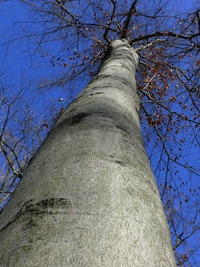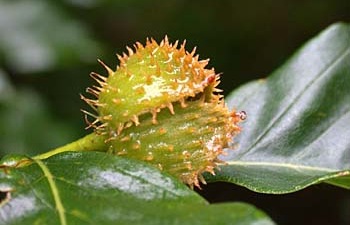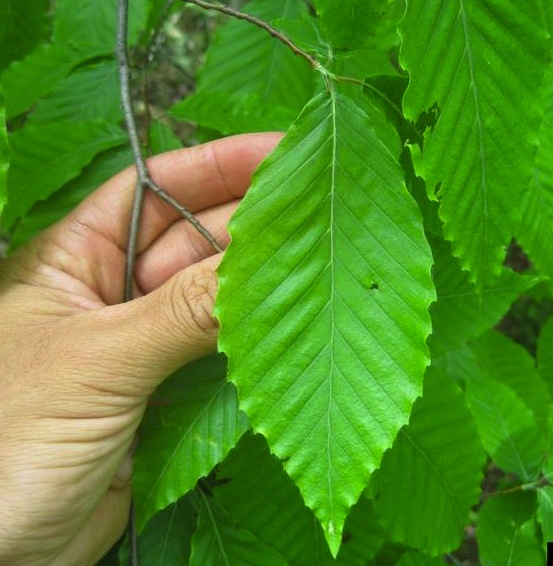Name That Tree
By Gil Medeiros
 If you selected American beech (Fagus grandifolia), you’re right!
If you selected American beech (Fagus grandifolia), you’re right!
This month’s prize is a bag of beechnuts (no, not chewing gum) that you can collect under any mature beech tree during late summer. But if you don’t move fast, all you will find is the prickly seed coverings left behind by birds, squirrels and chipmunks that chow down on beechnuts.
There are 13 species of beech in the world; this is the only one native to North America. It can be found in forests, parks and a few — but not many — backyards from zone 3 to zone 8. American beech likes the soil acidity in our area but not the compacted clay. Therefore, it is not a good street tree, nor is it suited for parking lots. Even in open fields, compaction can be such a problem that some local arborists recommend that the clay under mature beech trees be gently removed with an “air-spade” and replaced with looser organic soil.
 The American beech is too big for most backyards, not so much because of its height but because of its spread. It is also a slow grower. The benefit of today’s planting is likely to be realized by the next homeowner or that person’s heirs, not the visionary who stuck it in the ground. The faster growing European beech (Fagus sylvatica) is a better choice for backyards.
The American beech is too big for most backyards, not so much because of its height but because of its spread. It is also a slow grower. The benefit of today’s planting is likely to be realized by the next homeowner or that person’s heirs, not the visionary who stuck it in the ground. The faster growing European beech (Fagus sylvatica) is a better choice for backyards.
The American beech was a mainstay of North American forests when the colonists arrived. They used the dense white wood to make farm implements, and they burned it in their fireplaces.
Beech trees put on a good show in the fall as their deep green leaves turn to a golden bronze.
 Hikers in the forest will seldom encounter a solitary American beech. The reason is these trees tend to exist in groves or groups of beech trees. This is because new trees emerge from suckers on the roots of mature trees.
Hikers in the forest will seldom encounter a solitary American beech. The reason is these trees tend to exist in groves or groups of beech trees. This is because new trees emerge from suckers on the roots of mature trees.
American beeches grown with proper sun, soil and water are resistant to most insect and disease problems. They may live for over three hundred years. However, two diseases can be fatal to American beeches and are long-term threats to this grand species. Beech Bark Disease, a fungal pathogen spread by Beech Scale insects, has been detected in many eastern forests and continues to spread. The second threat is Beech Leaf Disease (BLD). This is a new one. In recent years it has afflicted beeches in Ohio and Pennsylvania. The cause of BLD is still undetermined.
References
Fagus grandifolia: American Beech, publication #ENH402, University of Florida IFAS Extension
American Beech, University of Kentucky Department of Horticulture
Beech Leaf Disease: Another Challenge for the American Beech, 2016, Penn State Extension
Beech Bark Disease, 2011, eXtension